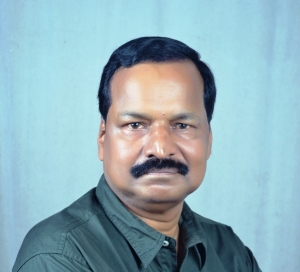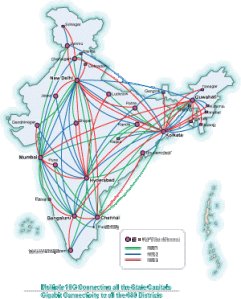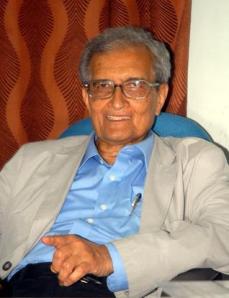The latest move by the UGC to stop the so-called non-NET fellowships is another nail in the coffin of higher education in India.
 On October 21, 2015, a news item informed that the University Grants Commission (UGC) has decided to discontinue non-NET fellowships of Rs 5,000 per month for MPhil students and Rs 8,000 per month to PhD students at central universities from the next academic session. The proffered reasons were these: this scheme was considered “discriminatory” as it was available only to researchers in central universities; there “was no way to be sure that it went to quality, meritorious students” and it was delivered in the ‘direct benefit mode.’
On October 21, 2015, a news item informed that the University Grants Commission (UGC) has decided to discontinue non-NET fellowships of Rs 5,000 per month for MPhil students and Rs 8,000 per month to PhD students at central universities from the next academic session. The proffered reasons were these: this scheme was considered “discriminatory” as it was available only to researchers in central universities; there “was no way to be sure that it went to quality, meritorious students” and it was delivered in the ‘direct benefit mode.’
And today, while it seems that the UGC has back-tracked to some extent on this decision after the protests that erupted, there is no immediate reason for any sense of relief, or of victory. This is not about politics. The issue is an academic one.
For some time now many of us – students and teachers alike – had indeed been asking for a review of this fellowship scheme. The Non-NET amounts are less than half the NET fellowships, but more importantly, they are given for 4 years while the NET fellowships are given for 5. What was really needed was to make sure that all fellowships are given for the same duration, namely 5 years, which is what it takes to get a Ph D in most disciplines in most universities in our country. Enhancing the amount, or at least rationalizing it, was an additional need of the review. In this context, the decision to do away with the fellowship altogether was a major shock: the UGC is expected to encourage research, not to retard it.
The non-NET fellowship that was introduced in 2008 was one of the initiatives of the UGC that had the general support of academics across the central university system. This was a real boost to Ph D programmes, enabling students to get some financial support at a crucial time in their academic careers. It also sought to address the fact that our country produces a surprisingly small number of Ph D’s each year, given the size of the student body and the number of universities. Most academic programmes perform well below par, well below what they could be doing. The leading “research” universities in India produce fewer than a third the number of Ph D’s as they have staff (namely, with N faculty members across disciplines, fewer than N/3 Ph D’s are awarded each year on average). Elsewhere (read China or the US) the numbers are more than double that. And given that there are so few research universities to begin with, the dismal state of affairs becomes only too apparent.
 Take the sciences, for instance. The following facts need to be seen in conjunction.
Take the sciences, for instance. The following facts need to be seen in conjunction.
- The NET examination in the sciences (5 areas: Physics, Chemistry, Mathematics, Life Sciences, Earth Sciences) awards approximately 5000 fellowships each year. These are given by the UGC and the CSIR jointly.
- Only something like 50% of the fellowships that are awarded are actually availed. And for reasons that include (a) a change of plans, (b) going to study outside India, (c) joining the Ph D programme at institutions that already have scholarships for their students and (d) not being able to secure admission in time, at least half the number, namely 2500 students do not join Ph D programs.
- Divide that number among all the university science departments, after removing the number that go to research laboratories, and you have the true picture- in any typical university department, it would be surprising to have more than two or three students on average who have the NET fellowship.
- Given the fact that again, on average, a typical science department has between 10 and 20 faculty members and only three students with the NET, there is the corollary that if you restrict research to only NET qualified students, most university research programmes will simply have to shut shop.
- If research programs are to sustain, there need to be more students (at least one per faculty every other year is not unreasonable). Without the Non-NET fellowship, it would be impossible to support the numbers of students that are necessary to sustain an academic research program. Most students in university departments cannot afford to be there without some support.
There is simply no way in which these requirements can be satisfied with only NET qualified students. There just aren’t enough of them! But beyond this, there are any number of reasons why we need to see that the Ph D programs in universities need strengthening, not destabilization.
- New areas of research need to be supported. Frequently, there are no NET examinations that prospective students could take, especially if they come from different backgrounds. Say for a subject like computational biology. If an engineer were to want to move into this area, what is the qualifying NET subject that she or he would take?
- We need more Ph Ds, not fewer. The quantity and quality of research that is done in the country has a real and positive correlation with economic growth and the general quality of life.
- There are not enough qualified academics to staff the large number of new universities. We need to seriously ramp up research- each faculty member of a research university needs to mentor at least one student each year. Or something close to that number if we are to be able to staff these various universities with qualified staff.
There indeed are issues with the present system of NET and non-NET fellowships, and the view of the Commission seems to be that that latter are being badly misused. The fact of the matter is that whatever misuse there is goes across the board: a rationalization of the overall process of how we (in the university system) support Ph. D. students is needed, not that the non-NET fellowships need to be scrapped. If anything, the scheme needs strengthening and widening, to bring State universities into the fold at the very least, and to be made more accountable at the same time.
There is more at stake than the giving or withdrawing of a small number of fellowships. There is the future of independent academic research to consider.




















